-
Free Delivery in DE, AT & CH
-
Made in Germany
-
Individual Customisation Available
Author: DREIECK DESIGN Editorial Team
Last updated: July 30, 2025
For many, the living room is the heart of the home – a place for relaxation and socializing. An inviting sofa, together with the right coffee table, forms the central element of this living oasis. But the selection is vast. In this guide, we'll show you how to confidently determine which coffee table perfectly matches your sofa and your living style.
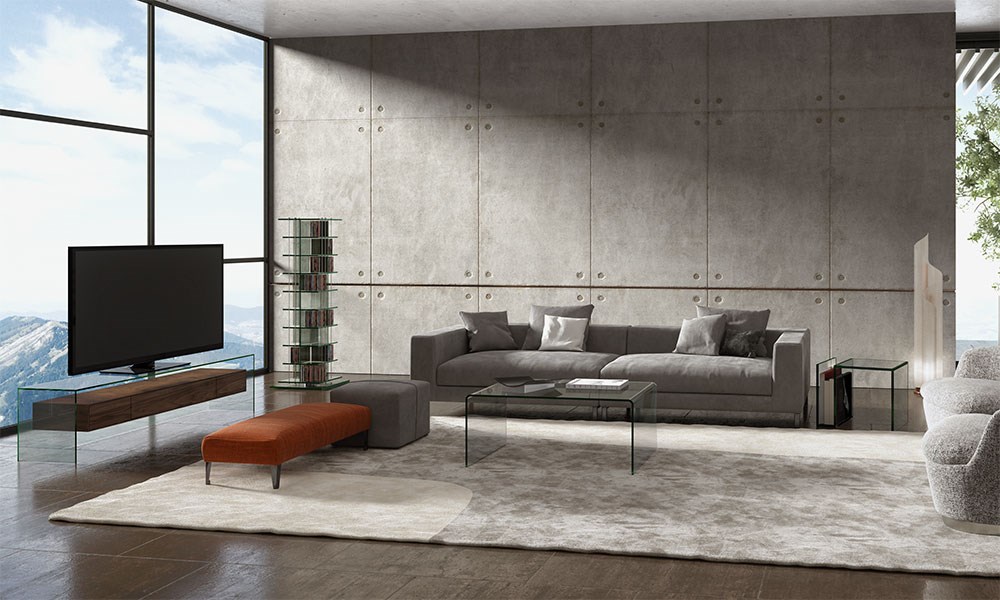
(Photo shows curved coffee table UT 05, TV stand FLY and CD stand CD 504 by DREIECK DESIGN)
The optimal size for your coffee table largely depends on the available space in your living room and the desired surface area. In a large living room, you have more freedom in your choice – just ensure the table isn't too small, as it might get lost in the space. However, if space is limited, a smaller, more delicate piece is recommended. Oversized models would unnecessarily make the room feel smaller and restrict movement.
Furthermore, the size of the coffee table should always be proportional to the sofa. If you have a large sectional, the coffee table can be more generous in size. For a compact two-seater sofa, it's better to opt for a smaller table or a flexible set of side tables. As a rule of thumb: the ideal table is about one-third to half the total length of the sofa. This ensures it is easily accessible from all seats.
Also, consider the distance between the sofa and the coffee table. It should be chosen so that you can comfortably reach the table from the sofa, while still leaving enough space to move around it freely. A distance of about 45 cm between the sofa's edge and the coffee table's edge is often ideal.
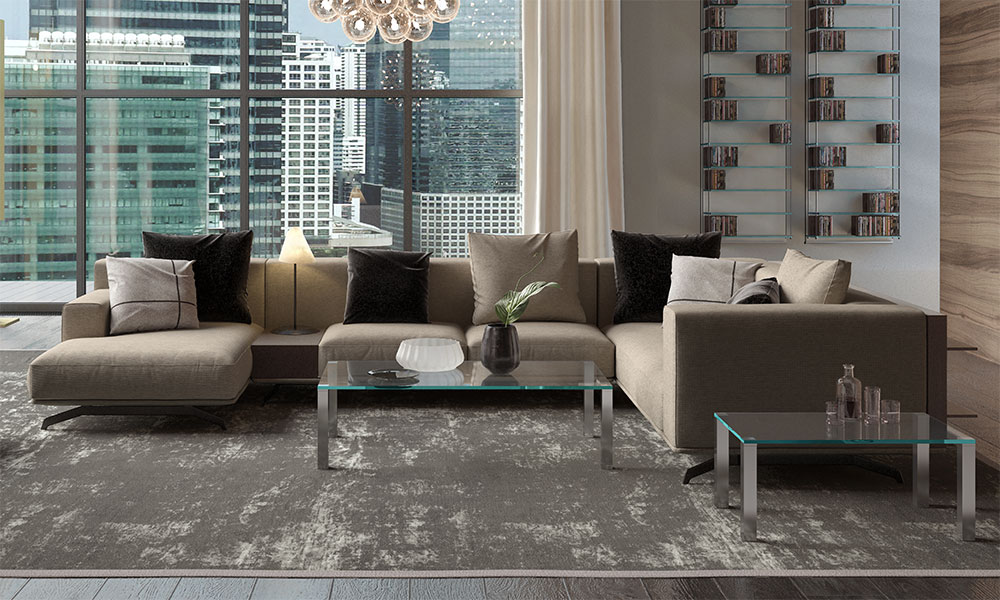
(Photo shows coffee table QUADRO with stainless steel feet and CD wall shelves by DREIECK DESIGN)
When choosing the right height for your coffee table, it's best to take cues from your seating furniture. As a general rule, the ideal coffee table is about the same height as the sofa's seat cushions. Significantly lower tables (approx. 30 cm) can create a modern lounge character, while higher models (over 50 cm) might look a bit bulky or old-fashioned unless they serve a specific purpose.
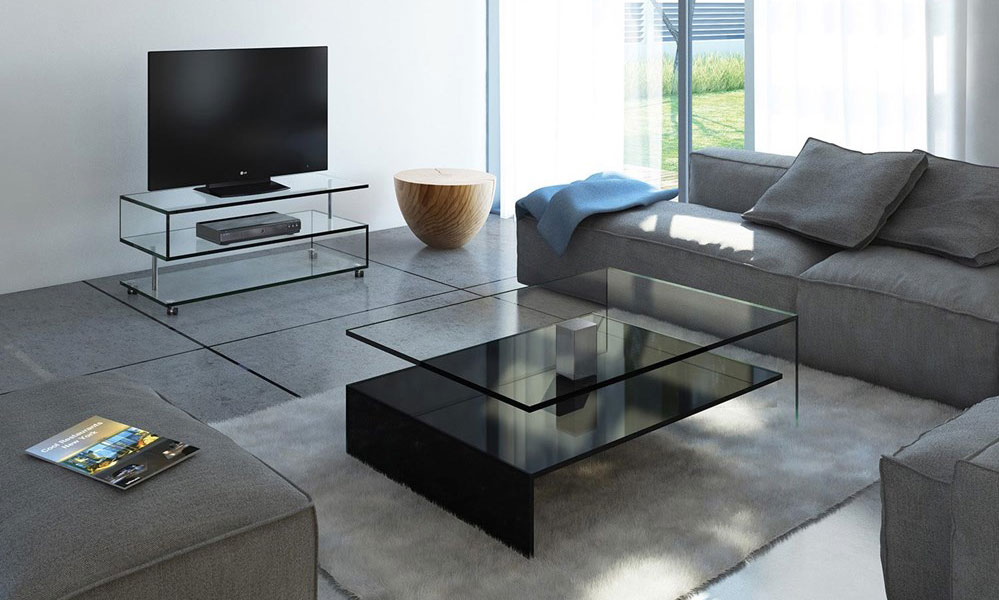
(Photo shows coffee table NUO and a mobile TV stand JANUS X by DREIECK DESIGN)
The appropriate height also heavily depends on how you intend to use the coffee table. If it's just for placing remote controls and drinks, a lower model is often sufficient. However, if you also want to eat, work, or play on it, it should be a bit higher to allow for a comfortable posture. Want to use the coffee table for various purposes? Then it's worth considering height-adjustable models, such as our SLIDE coffee table.
Our tip for testing the height: Sit on your couch and simulate a coffee table with a stack of books or boxes. Vary the height of the stack until it feels comfortable for your most common uses. Then, measure the height of the stack – this will give you your personal ideal dimension. As a general guideline for a pleasant lounge height, we recommend 30-50 cm.
When it comes to the shape of the coffee table, it's best to orient yourself by the surrounding seating and the room's layout. You generally have the choice between rectangular, square, triangular, round, or oval coffee tables. Depending on the size and shape of your living area and your individual needs, certain variants are more suitable than others:
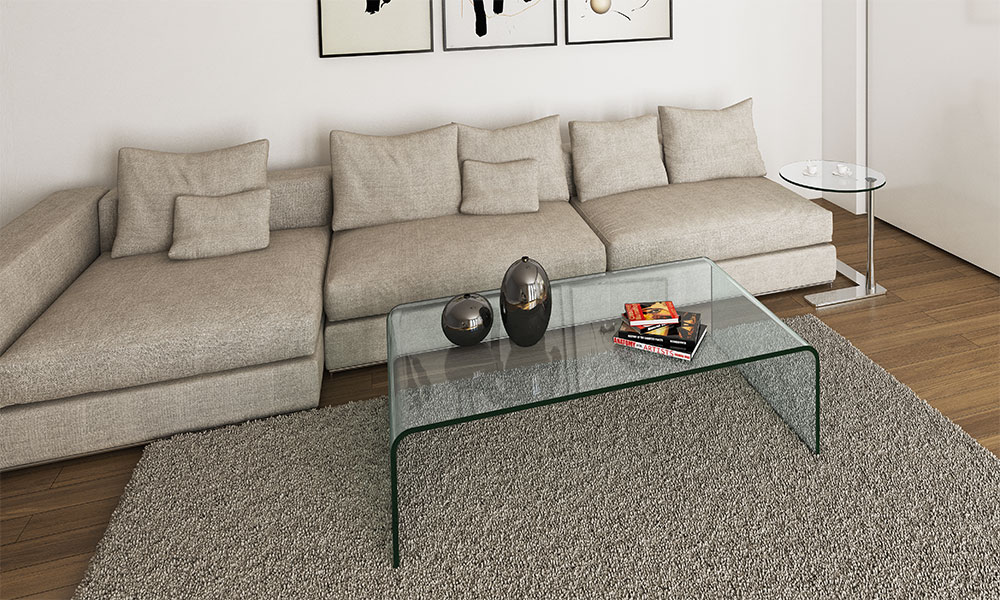
(Photo shows curved glass coffee table UT 20 and side table FADO by DREIECK DESIGN)
Coffee tables come in a wide variety of materials. Whether wood, metal, high-gloss finishes, natural stone, or glass – there's something for every taste and interior style. The choice of material is less about which coffee table generally suits which sofa, and more about the properties the materials bring and the atmosphere you want to create. Among the most popular and versatile materials are glass, wood, and metal coffee tables.
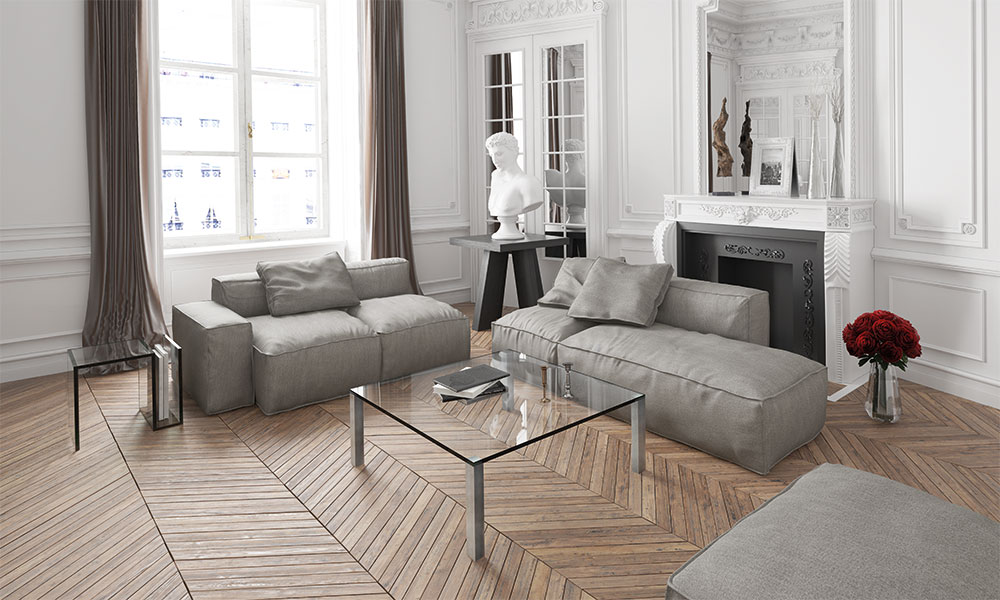
(Photo shows coffee table QUADRO and side table JANUS III by DREIECK DESIGN)
Which coffee table color matches which sofa is a matter of personal taste and ultimately depends on the overall concept and style of your living room. Do you have a Scandinavian-style living room? Then tables in light colors, white, or with natural wood surfaces are ideal. For living rooms in a classic country house style, darker wooden tables are often a coherent choice. Or perhaps you want to create a deliberate style break and set a bold accent with a colored coffee table? The coffee table, with its diverse range of colors and shapes, is also very well suited for this.
Of course, you are somewhat guided by the chosen base material in terms of color, but there is now an impressive variety of models. For example, a glass piece does not always have to mean a transparent glass top on legs – satin, colored lacquered, or printed glass tops are also possible.
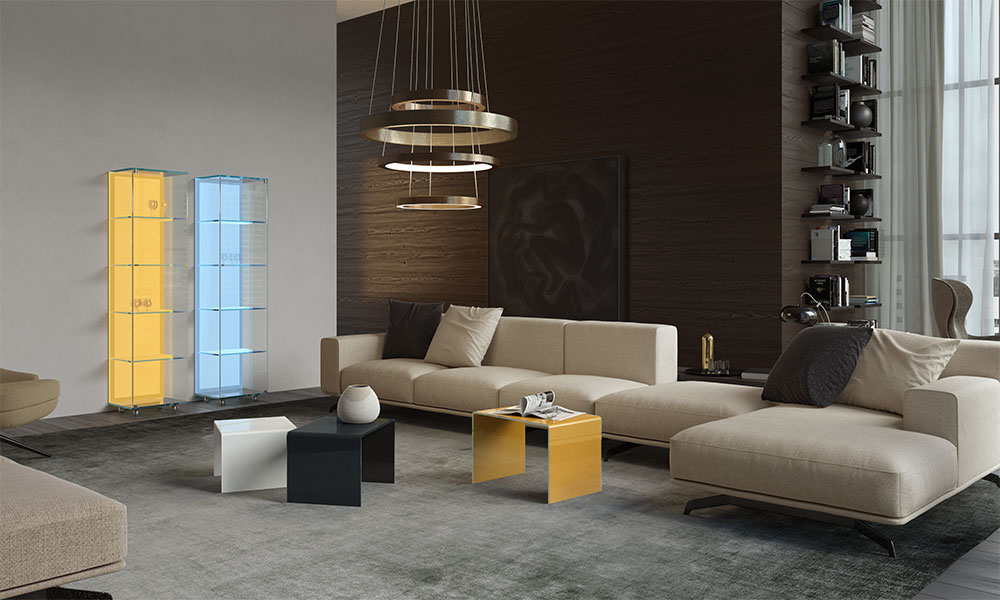
(Photo shows glass display cases with LED lighting SOLUS BACKLIGHT and lacquered glass tables ST 06 by DREIECK DESIGN)
At many manufacturers, like DREIECK DESIGN, there is also the option to individually combine different materials and surfaces. For example, in our range, you will find elegant glass coffee tables with wood or modern glass coffee tables with metal, where colors for wooden elements or lacquers are often selectable.
Small living rooms often present a special challenge when it comes to furnishing. It's important to carefully consider which pieces of furniture are truly necessary and what might be omitted to avoid overcrowding the room. Many people with limited space decide to forgo a coffee table altogether to save precious room. However, this is not absolutely necessary! With a few clever tricks and the right selection, a coffee table can blend harmoniously into a small living room and offer significant benefits.
In small rooms, definitely avoid large, bulky models. They would take up too much floor space and thus restrict necessary freedom of movement. Additionally, they would visually narrow the space – exactly what you want to avoid in a small living room. Instead, round or oval coffee tables are particularly suitable, as their organic shape makes them appear less massive and they are often perceived as lighter and more airy.
A similar positive effect is achieved with glass tables. Due to their transparent surface, they appear less conspicuous, visually open up the room, and make it feel more spacious. They also reflect light, ensuring more brightness in the room, which in turn makes it seem larger and airier.
For small living rooms, coffee tables with integrated additional storage are particularly recommended. Models with storage compartments, drawers, or a second level below the tabletop make optimal use of the available space for storage purposes. This way, you even gain space, as remote controls, magazines, and other small items don't have to lie on the tabletop.
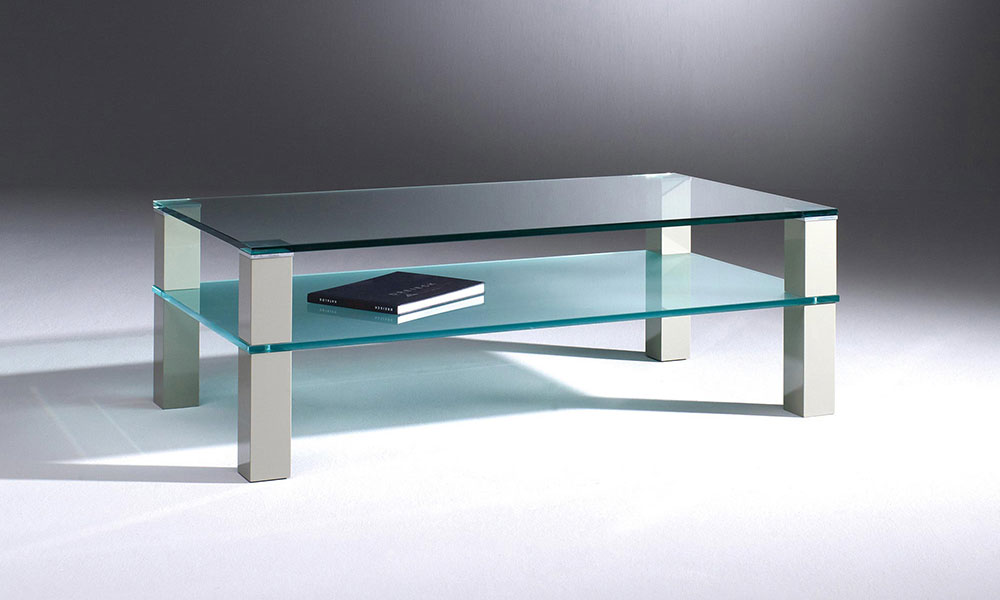
(Photo shows glass coffee table with shelf REMUS DOUBLE by DREIECK DESIGN)
Also interesting for flexible space use are so-called nesting tables (several tables that slide into each other) or turnable models like our URANUS. These often consist of at least two differently sized individual tables that can be pushed together to save space or distributed flexibly in the room as needed. This way, you can gain valuable space when required or create additional surfaces when guests arrive. Models with wheels are also practical, as they can be moved with little effort if you need the space in front of the sofa for something else.
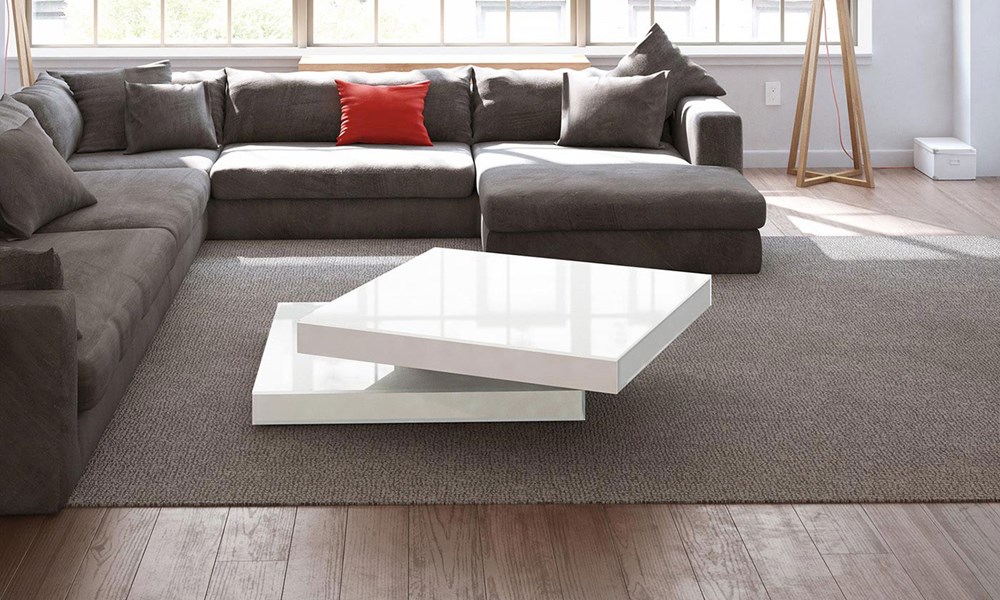
(Photo shows turnable glass coffee table URANUS by DREIECK DESIGN)
The sofa and coffee table are an inseparable duo in the living room – one is hardly imaginable without the other, and together they significantly shape the atmosphere of the room. To help you confidently find which coffee table is ideal for your sofa, your needs, and your living style, we have summarized the most important aspects for you here in a brief and clear checklist:
Remember: Many of our DREIECK DESIGN coffee tables are also available as custom-made pieces to perfectly suit your individual wishes and spatial conditions.
The ideal height of a coffee table is based on the seat height of your sofa. As a rule of thumb, the tabletop should be at approximately the same height as the sofa's seat cushion, usually between 30 and 50 cm. A lower table often creates a more modern, lounge-style look, while a higher table can be more practical for eating or working. For maximum flexibility, height-adjustable coffee tables are an excellent choice.
Proportions are key to a harmonious overall look. A coffee table should neither be too massive nor look lost next to the sofa. A proven rule of thumb states that the coffee table should be approximately one-third to one-half of the total length of the sofa. This ensures it is easily accessible from all seats and that the proportions feel balanced.
For an L-shaped sectional sofa, rectangular coffee tables often work best, as they echo the elongated shape of the sofa and provide a generous, easily accessible surface. Alternatively, oval tables are a very elegant and harmonious choice. For very large sectionals, a centrally placed square table can also work well.
In small rooms, it's important to choose furniture that doesn't visually overwhelm the space. Glass coffee tables are ideal for this, as their transparency maintains an open and airy atmosphere. Round or oval shapes also appear lighter than square ones. Additionally, flexible solutions like nesting tables or models with a second shelf for extra storage are highly recommended.